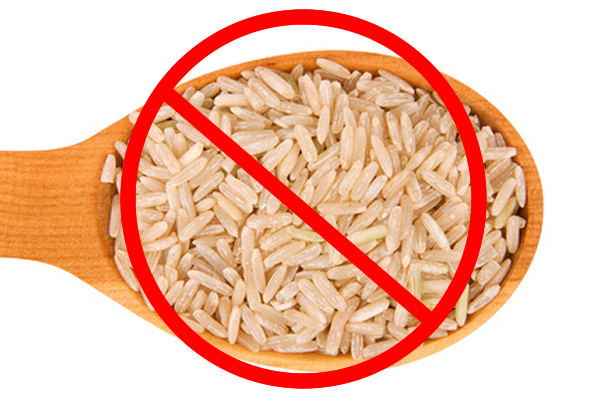I don’t eat rice very much anymore. And when I do, it is rarely brown.
Last November Consumer Reports published their test results on 223 samples of rice products. For brown rice lovers everywhere it was disappointing – even shocking – news. Rice and products made with rice, especially brown rice, have problematic levels of arsenic.
And yet somehow, brown rice has retained its health-food halo. Old habits die hard! It takes time for us to assimilate the latest nutrition news and adjust our perceptions of what it means to eat better. Just as people still sometimes reach for “fat-free” products that were all the rage back in the 90s (despite the lengthy questionable ingredient list,) many people still perceive brown rice as healthy despite its arsenic exposure risk. And with all of the “health” and “nutrition” news coming at us every day, it can be easy to just start tuning it out.
But arsenic in our food supply is a news bite worthy of our attention.
Here are some FAQs on the arsenic problem, and some suggestions to help you limit your exposure when you do choose to eat rice.
Q. Arsenic – Just how bad is it?
There are two kinds of arsenic – organic and inorganic. Inorganic arsenic is a carcinogen. Besides cancer, other health risks from chronic arsenic exposure include kidney damage, anemia, headaches, increased risk of diabetes, low blood pressure and skin lesions. Infants and children are especially at risk. Exposure to arsenic is linked with preterm delivery, miscarriage, low birth weight and infant death. It can also negatively affect a child’s intelligence and long-term memory.
There is no federal limit for arsenic in foods, but there is a limit on drinking water. By 2006, the arsenic in drinking water had to be lowered from 50 ppb to 10 ppb (5 ppb in New Jersey.) But according to EPA estimates, the risk of cancer from 10 ppb of arsenic in tap water is 1 in 2,000, a 50-fold higher risk than that allowed for most other carcinogens. If you were to drink a liter of water in New Jersey (5 ppb,) that would expose you to 5 micrograms of inorganic arsenic.
So how did the rice products fare against the drinking water yardstick? Not well. The brown rice tested ranged from 3.7 to as high as 8.4 grams of inorganic arsenic per serving. That’s a mere ¼ cup of uncooked rice, or about ½ cup of cooked rice. Rice from California, India and Thailand tested lower than most rice from Louisiana, Texas and Arkansas and Missouri. White rice and imported basmati and jasmine rice had the lowest amounts, around 1.3 to 3.5 micrograms per serving.
Q. How did arsenic get into rice?
As it turns out, chicken litter fertilizer contaminated with arsenic is a major culprit. Three Arkansas farms have filed a lawsuit against Pfizer, Tyson Foods and three poultry producers. Pfizer’s arsenic-laced drug Roxarsone was widely used in poultry confined animal feeding operations (CAFOs.) The arsenic helped to control an intestinal parasite which helped chickens eat more (grow faster) and makes the meat appear more pink. Since the arsenic was an organic form, it was viewed as safe and used for decades. Chicken ate the arsenic-laced feed, and their waste was used as fertilizer.
Later it was discovered that when organic arsenic in chicken waste is placed in an anaerobic environment such as soil, it can transform into highly toxic inorganic arsenic. So now many farmers have rice fields full of cancer causing inorganic arsenic. A lot of this arsenic is caught up in the outer layer of the rice kernel, the bran. That is why brown rice generally contains more arsenic than white rice, which has been polished and the bran removed.
Q. How can I prepare rice to reduce arsenic levels?
Use lots of clean, low arsenic water (check your municipal water report) when preparing rice. Rinsing rice thoroughly in 4 to 6 changes of water can reduce total arsenic content by up to 30%. Then cook your rice like pasta, using about 6 quarts of water to 1 part rice. This should reduce the amount of total arsenic by 50 to 60 percent.
Buy rice from California (Lundberg Farms) or imported rice such as basmati from India or Thai jasmine rice. Review the Consumer Reports arsenic test chart for the brands you may want to steer clear of. Whole Foods 365 Everyday Value Long Grain Brown Rice tested very high, as did Carolina Whole Grain Brown. Aromatic imported white rice tested much lower than U.S. grown rice.
Q. What rice alternatives should I explore?
There are other ways to get needed fiber, but if you want something rice-like for side dishes, try barley (the highest fiber whole grain,) ancient kamut, gluten-free sorghum, or quick-cooking bulgur. While these grains may not currently be in your cooking repertoire, it can be fun to try something new. Pick one and look up a recipe online, then give it a whirl. You may just find a new grain to love.
Personally, I have decided to limit my brown rice consumption. I may have it once a month, if at all, preferring aromatic basmati or jasmine rice on the few occasions each month that I want a small amount of rice to accompany beans or a stir-fry. I lean toward vegetables and other grains such as kamut or quinoa.
Do you avoid brown rice and rice products? Share your thoughts with me below.









Leave A Comment